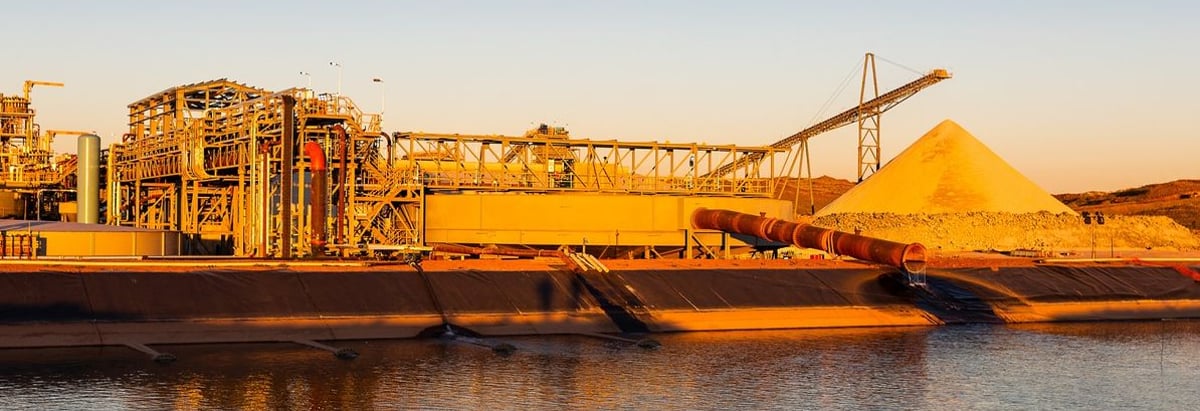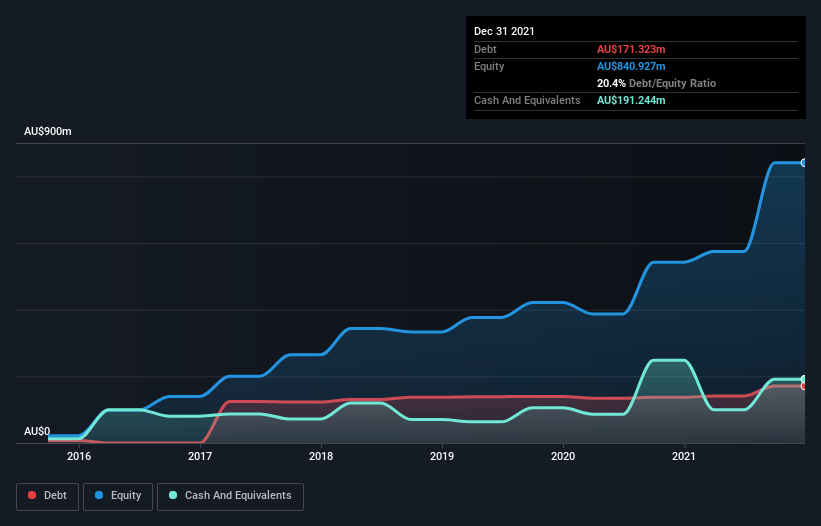
Legendary fund manager Li Lu (who Charlie Munger backed) once said, 'The biggest investment risk is not the volatility of prices, but whether you will suffer a permanent loss of capital.' When we think about how risky a company is, we always like to look at its use of debt, since debt overload can lead to ruin. We can see that Pilbara Minerals Limited (ASX:PLS) does use debt in its business. But is this debt a concern to shareholders?
Why Does Debt Bring Risk?
Debt is a tool to help businesses grow, but if a business is incapable of paying off its lenders, then it exists at their mercy. In the worst case scenario, a company can go bankrupt if it cannot pay its creditors. However, a more frequent (but still costly) occurrence is where a company must issue shares at bargain-basement prices, permanently diluting shareholders, just to shore up its balance sheet. Of course, debt can be an important tool in businesses, particularly capital heavy businesses. The first thing to do when considering how much debt a business uses is to look at its cash and debt together.
Check out our latest analysis for Pilbara Minerals
What Is Pilbara Minerals's Debt?
The image below, which you can click on for greater detail, shows that at December 2021 Pilbara Minerals had debt of AU$171.3m, up from AU$137.0m in one year. However, it does have AU$191.2m in cash offsetting this, leading to net cash of AU$19.9m.

How Strong Is Pilbara Minerals' Balance Sheet?
According to the last reported balance sheet, Pilbara Minerals had liabilities of AU$153.6m due within 12 months, and liabilities of AU$200.7m due beyond 12 months. Offsetting these obligations, it had cash of AU$191.2m as well as receivables valued at AU$70.4m due within 12 months. So it has liabilities totalling AU$92.7m more than its cash and near-term receivables, combined.
Having regard to Pilbara Minerals' size, it seems that its liquid assets are well balanced with its total liabilities. So it's very unlikely that the AU$6.82b company is short on cash, but still worth keeping an eye on the balance sheet. Despite its noteworthy liabilities, Pilbara Minerals boasts net cash, so it's fair to say it does not have a heavy debt load!
It was also good to see that despite losing money on the EBIT line last year, Pilbara Minerals turned things around in the last 12 months, delivering and EBIT of AU$139m. When analysing debt levels, the balance sheet is the obvious place to start. But ultimately the future profitability of the business will decide if Pilbara Minerals can strengthen its balance sheet over time. So if you're focused on the future you can check out this free report showing analyst profit forecasts.
Finally, a business needs free cash flow to pay off debt; accounting profits just don't cut it. Pilbara Minerals may have net cash on the balance sheet, but it is still interesting to look at how well the business converts its earnings before interest and tax (EBIT) to free cash flow, because that will influence both its need for, and its capacity to manage debt. During the last year, Pilbara Minerals produced sturdy free cash flow equating to 52% of its EBIT, about what we'd expect. This cold hard cash means it can reduce its debt when it wants to.
Summing up
While it is always sensible to look at a company's total liabilities, it is very reassuring that Pilbara Minerals has AU$19.9m in net cash. So we don't have any problem with Pilbara Minerals's use of debt. When analysing debt levels, the balance sheet is the obvious place to start. But ultimately, every company can contain risks that exist outside of the balance sheet. To that end, you should be aware of the 3 warning signs we've spotted with Pilbara Minerals .
Of course, if you're the type of investor who prefers buying stocks without the burden of debt, then don't hesitate to discover our exclusive list of net cash growth stocks, today.
New: Manage All Your Stock Portfolios in One Place
We've created the ultimate portfolio companion for stock investors, and it's free.
• Connect an unlimited number of Portfolios and see your total in one currency
• Be alerted to new Warning Signs or Risks via email or mobile
• Track the Fair Value of your stocks
Have feedback on this article? Concerned about the content? Get in touch with us directly. Alternatively, email editorial-team (at) simplywallst.com.
This article by Simply Wall St is general in nature. We provide commentary based on historical data and analyst forecasts only using an unbiased methodology and our articles are not intended to be financial advice. It does not constitute a recommendation to buy or sell any stock, and does not take account of your objectives, or your financial situation. We aim to bring you long-term focused analysis driven by fundamental data. Note that our analysis may not factor in the latest price-sensitive company announcements or qualitative material. Simply Wall St has no position in any stocks mentioned.
About ASX:PLS
Pilbara Minerals
Engages in the exploration, development, and operation of mineral resources in Australia.
Excellent balance sheet with reasonable growth potential.


